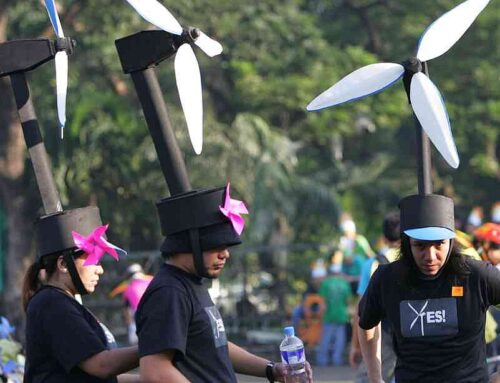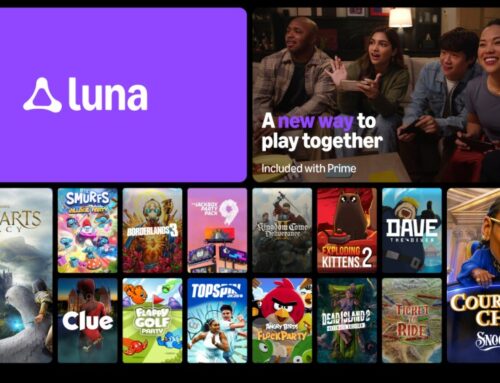How the NASCAR sponsorship model is changing: ‘A massive shift’ in Amazon era
May 23, 2025
It was a jarring sight earlier this year when the Joe Gibbs Racing hauler carrying Denny Hamlin’s car had a large vacancy on its side paneling typically filled by the branding for Hamlin’s main sponsor.
For nearly 20 years, FedEx occupied this spot, serving as the primary sponsor for Hamlin’s No. 11 team, and in many years did so by sponsoring the vast majority of the races on the NASCAR Cup Series schedule. Such was the relationship between driver, team and sponsor, it became one of the most identifiable in NASCAR history.
But the partnership between FedEx and JGR ended after the 2024 season, and a replacement still hadn’t been secured by late January when the No. 11 team’s hauler had pulled into Charlotte Motor Speedway before that weekend’s season-opening Clash exhibition race. That JGR wasn’t able to immediately land a replacement for a driver in Hamlin, who’s one of the most recognizable and successful current drivers, seemed to speak of a bigger issue — an indictment on the state of NASCAR as a whole. In some circles, alarms went off.
Flash forward four months, and when Hamlin’s hauler pulls into Charlotte for this weekend’s race, the once-vacant spot on its side paneling has since been filled. In March, JGR announced Progressive Insurance had signed on as primary sponsor for the 18 races that had not yet been filled. The news cast a spotlight on both the ever-changing landscape teams are fighting on the sponsorship side and why teams are largely optimistic about the direction the sport is headed.
“The marketing side of it is very bullish right now,” said team owner Rick Ware, whose team signed a 12-race deal with Arby’s earlier this year. “We’re obviously one of the smaller teams and we’re having dramatically more conversations than we typically have in the past. That doesn’t mean that you close them all, but the interest is there.”
Nearly every team owner or executive who spoke to The Athletic for this story expressed similar enthusiasm. Many said this was the most optimistic they’ve felt about sponsorship in some time, pointing to increased interested due to two main factors: A new media rights deal that notably includes Amazon Prime picking up five races — the first time NASCAR has paired with a streaming service to carry Cup races — and the inclusion on the schedule of the first international Cup points race since the 1950s.
“The marketers know that’s the path of where audiences are going,” 23XI Racing president Steve Lauletta said. “So this isn’t a one-year light switch, it’s going to be more of a dimmer to try to keep growing and follow the audience as it grows.”

For nearly two decades, FedEx served as Denny Hamlin’s primary sponsor before exiting the sport after last season. (Jared C. Tilton / Getty Images)
When NASCAR announced its deal with Prime in late 2023, the excitement expressed by the league was offset to some degree by a number of teams who, while encouraged, also had reservations on whether a sport dependent on corporate sponsorship was meant to air on a subscription streaming service.
But teams have come to learn that a good number of fans already had access to Prime — some not even realizing it — and that being associated with a leading streaming service was something that proved attractive to both existing sponsors and potential future sponsors. Multiple team executives said they had companies outside the sport reach out to them wanting to explore potential deals solely because of the value Prime offered.
“Sponsors are very intrigued by Amazon,” Richard Childress Racing president Mike Verlander said. “Now, we have no result back yet, so let’s see what the result looks like. But you see what they did with the NFL. It’s only grown. We expect the same.
“It’s been a massive shift. You’ll hear the naysayers about the unknowns of Amazon, but at the end of the day, I think it’s an all-positive narrative because there’s new players that are putting their stake into this. Now, is it tough because the avid fan has to now figure out where to find it? Yeah, but in time, everyone will fall in line and figure it out.”
A similar reaction occurred last August when NASCAR announced Mexico City’s addition to the 2025 Cup schedule. Several companies were intrigued by the potential marketing opportunities, envisioning a large crowd of fans when NASCAR visited the Autódromo Hermanos Rodríguez circuit.
One such company is Colgate, which has funded the non-profit Estrellas Colgate since 1980, providing athletic and wellness programs to underserved children. Having become connected with RFK Racing through the team’s new primary sponsorship with supermarket giant Kroger, a business-to-business deal was put together where one of RFK’s three cars will carry Colgate branding in Mexico City.
A race in Mexico does bring a set of new sponsorship challenges, however.
Mexico imposes stringent regulations on what products can be advertised there. For some teams, this is a non-issue. For others, like RCR, it’s been problematic. Among the team’s sponsors are Rebel Bourbon, Bet MGM, Zone nicotine pouches and Winchester Ammunition, none of which are allowed to advertise in Mexico. Therefore, any branding on any car, uniform, hauler, pit box, etc., must be covered up.
Despite the hurdles for RCR, Verlander supports NASCAR expanding internationally.
“It’s been very positive because it’s a new reach, it’s a new fan, it’s a new everything,” he said.
Though some of RCR’s longtime partners may not be able to market in Mexico, RCR is well-versed in finding new partners interested in sponsoring the team in a limited capacity. In fact, they’ve become a leader in this approach to selling sponsorship.
Not too long ago, it was common for a team to have an anchor sponsor on its car for 20-plus races, if not the near entirety of the 38-race season. JGR, for one, operated under this model; it had long-term, big-money contracts with several Fortune 500 companies to back its four teams and rarely had any holes.
The game has changed, though, and JGR and other teams have had to evolve with it. As much as teams would love to have one main sponsor for 30-some races, this is no longer feasible. JGR president Dave Alpern said he’s sat in more meetings with prospective sponsors this season than at any point in his 32 years working in the sport. And from this, JGR has signed six new sponsors, four of which are new to NASCAR.
“The models are changing in terms of what people are looking for, and so JGR has adapted,” said Eric Schaffer, JGR’s chief commercial officer. “We’ve added a marketing group that we didn’t have before. And so people are focused on data and absolutely getting a return on their investment. And our job, and our team’s job, is to make sure that they get that return. … It’s certainly not a sticker on the car anymore, it’s an integrated marketing program that we’re trying to deliver value for the partners.”
Many companies now understand that while being involved in NASCAR brings value, that value doesn’t translate to being the primary sponsor for so many races. It’s become about maximizing return on investment, and in many instances, that means identifying key markets and focusing marketing efforts heavily on this. For instance, if a company doesn’t make its product available in a certain region of the United States, it might not make sense to market itself at a particular race in that area.

NASCAR execs say there’s been an uptick in sponsor interest since the latest media rights deal, which includes Amazon Prime. (Chris Graythen / Getty Images)
RCR was one of the first organizations to focus heavily on a model of having several primary sponsors throughout the season, each of which would feature in only a handful of races. Competitors in the garage sometimes looked at RCR’s cars and snickered at whichever new or unknown company it had signed, but for RCR, it was an effective strategy to ensure it sold out all its primary sponsorship inventory.
This model has paid dividends for RCR, even helping position the organization to land one of the biggest named drivers, Kyle Busch, to hit the free agent market in many years.
After Mars Inc. informed JGR before the 2022 season that this would be its last with the team, JGR found itself in the difficult position of having to find a replacement primary sponsor and also allot enough budget to afford the salary for a two-time Cup champion still in the prime of his career. It was a puzzle JGR could not completely put together. The result saw Busch decamp to RCR, where it had a piecemeal sponsorship program in place to make a deal work.
“What I like about our model is you have six, seven brands on a car and they’re all taking Austin Dillon to market, and all are taking Kyle Busch and Jesse Love to the market,” Verlander said. “That’s just a further reach by brands promoting who we are. Do you want 38 one-race sponsors? No. In a perfect world, you have a small handful, and everybody shares a little bit of the activation load. But you have to own who you are, and you have to lean into those brands, and you have to be willing to sell three at a time if you need to.”
Outside of a few exceptions, gone are the days of a team having one primary sponsor for the entire season. This trend will likely continue. But at the same time, the number of companies interested has changed, too, with more enticed by NASCAR’s changing complexion.
“It’s certainly better than where it was when I started as a team owner in the Cup Series,” said Brad Keselowski, who became co-owner of RFK Racing beginning with the 2022 season. “… We have really good interest, interest is not a problem for us. Connecting all the dots and getting through the layers of corporate America is seemingly the challenge, more so than interest.”
(Top photo of Denny Hamlin’s Progressive, Christopher Bell’s Dewalt, and Bubba Wallace’s McDonald’s-sponsored cars: Jeffrey Vest / Icon Sportswire via Getty Images)
Search
RECENT PRESS RELEASES
Related Post




